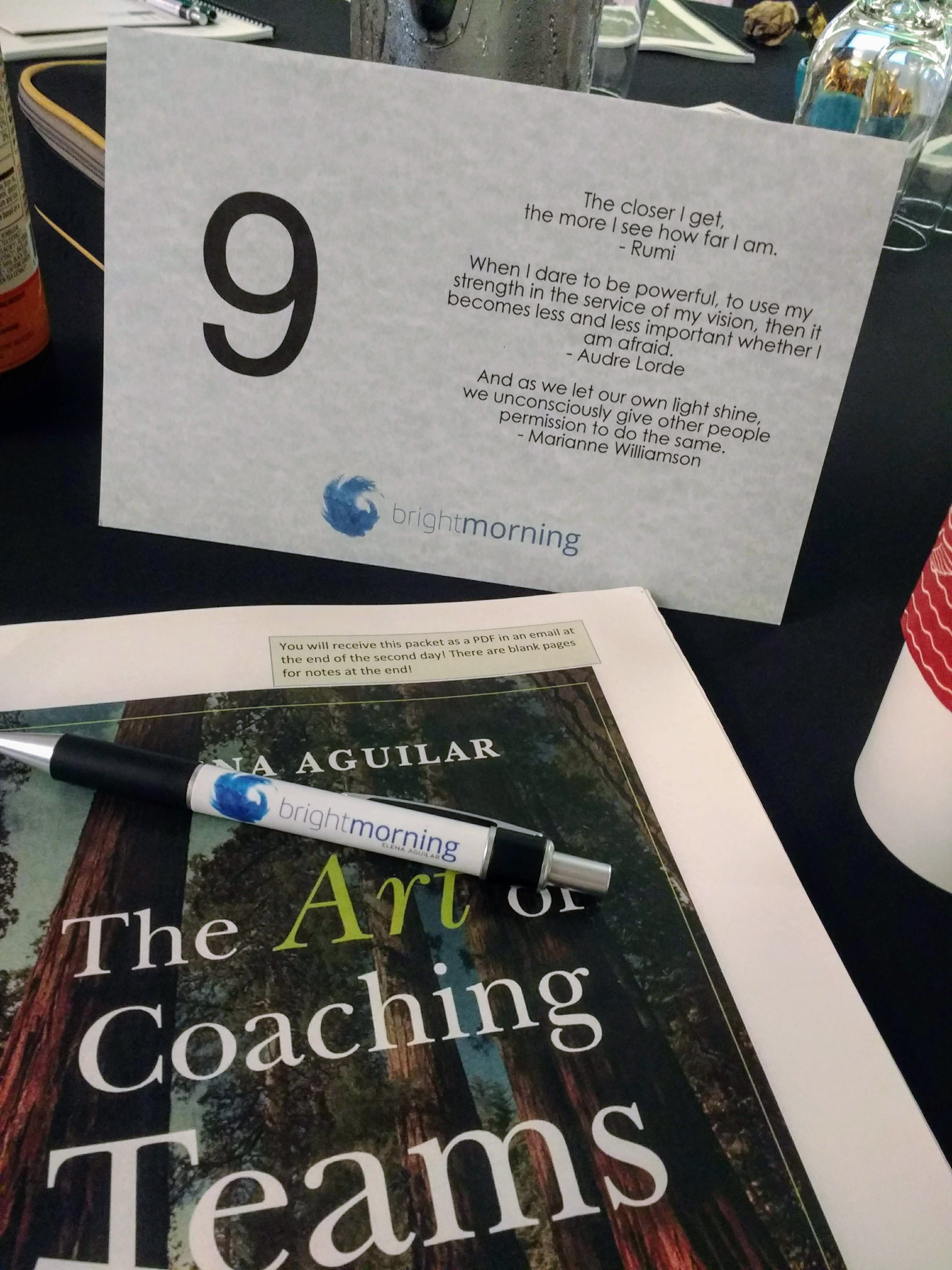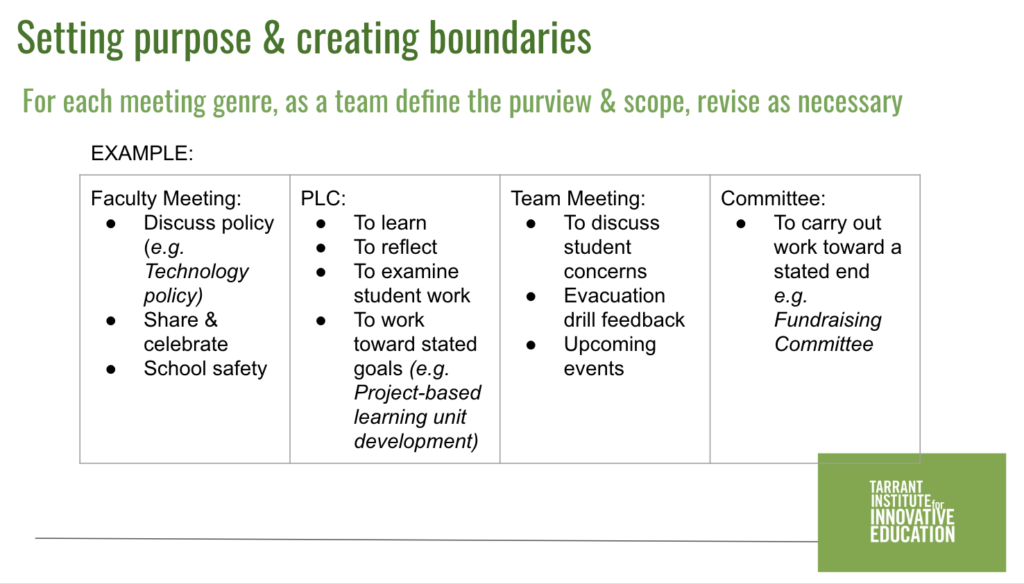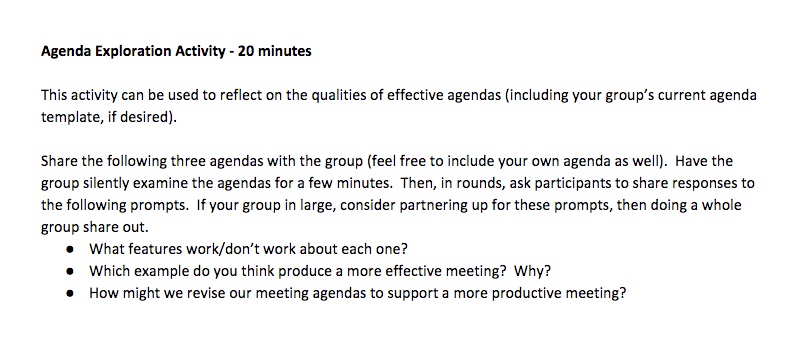Good meetings can be hard to find
 We’ve all been there: staff meetings that could have been an email or team meetings spent admiring problems and getting nowhere. And I’m not claiming innocence here: I’m definitely guilty of creating bullet list agendas or meeting with no agenda (or outcome) at all.
We’ve all been there: staff meetings that could have been an email or team meetings spent admiring problems and getting nowhere. And I’m not claiming innocence here: I’m definitely guilty of creating bullet list agendas or meeting with no agenda (or outcome) at all.
But over the past couple of years, I’ve upped my meeting game. I’ve gathered some awesome tips and tricks, and I’m here to share.
The only 7 reasons for meetings
Last fall, I was an eager student at one of Elena Aguilar’s Art of Coaching Teams workshops. This training was chock full of brilliance, and I’ve put so much of it into action already. For example, did you know that there are (only) seven reasons to meet? For real. Check it out. Here they are, in no particular order:
- Share information
- Learn something
- Solve a problem
- Make decisions
- Plan
- Build community
- Set goals, calibrate, & reflect
Of course, there are caveats for each of these. Take reason 1, for example, sharing information: if it can be done via email you don’t need to meet! Brilliant! And collaboration should be central to the meeting: otherwise, why are we meeting? The big takeaway here is that you should know the purpose of your meeting at the start. Or better yet, when you draft the agenda.
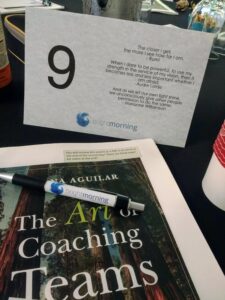
A good agenda is crucial to an effective meeting
A well-crafted agenda is a beautiful thing. It gently guides the group to a preset outcome or goal. It can create the space to connect and laugh and learn together, it can clarify how (and if) a decision will be made, and it can nudge us back on track if (when) we digress.
But it takes some time and thought to prepare an effective agenda. I’ve heard some recommendations that suggest that building the agenda should take almost as long as the meeting itself! Of course, we don’t always have time for that. But I have a few tips that can help streamline the process.
State your purpose
- Reflect on our team goals for the year and add evidence to our school plan
- Calibrate our assessment tool for the energy projects.
- Plan the student exhibition night
It’s kind of like backward design for agenda building, y’all! We need to know where we’re going. Once we know that, we can then plan our route.
(Aaaand a few more words on purpose)
The table above is one example of how you might define and shape your myriad meetings.
Figure out the what, why, and how
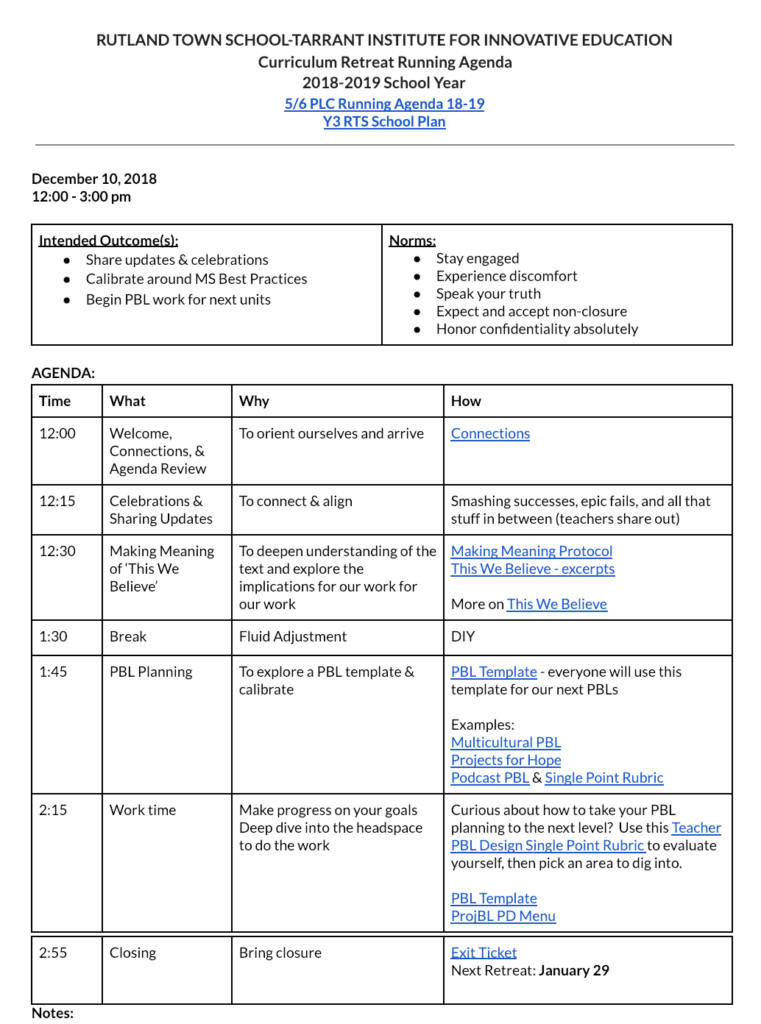
“that the more time you spend on an agenda, the better the meeting will be. You will be more prepared to facilitate and others will respond to that. People know why they are there and what we will discuss. [It also] helps with buy-in.”
Be honest about time
This needs little explanation. But please, please, I beg of you, be realistic about how long it will take to do each item on your agenda well. Sure, you can rush through the conversation to stay on time, but if you don’t reach a resolution or natural conclusion, you may have to revisit the topic again. And that’s not very effective or efficient.
I am a master of making things work on paper, shaving a minute or two from here and there. But guess what? Just because it works on paper doesn’t mean it’s sufficient for real, live humans. Trust me.
Consider:
- the task or topic: sharing a classroom highlight will typically be quicker than discussing the new progress report template. Sometimes, hour-long meetings only offer enough time to address one topic sufficiently. While unanticipated challenges can always occur, do your best to evaluate how much time it will take to reach the desired outcome. Less is more (and who doesn’t like leaving early if you happen to under plan!).
- the number of people in the group: the amount of time it will take 3 people to share their observations is vastly different than the time needed for 20 people to share. Since it’s important that all voices are heard, consider using pair-shares or small group discussions to move things along more quickly in larger groups.
- the process: this is where figuring out the ‘how’ can really come in handy. What will this time look like? How will folks engage with the topic? Does a decision have to be made? How will it be made?
Inevitably unexpected things come up and it’s not uncommon to get off schedule, but over time and with diligence in planning you can dial it in and vastly improve your estimates and planning.
Open and close the meeting with intention
The beginning and end of the meeting are important times. Upon arrival, we have all come from another busy facet of our day, and often need a moment to relax, decompress, or settle in the new space.
Hirten likes to start meetings off with a game. “Even for the cynics this can work to lighten the mood, provided it is a fun game, and not too long.” Laughing together is a great way to build a team, and can also double as an opportunity for teachers a chance try a new game to bring back to their students.
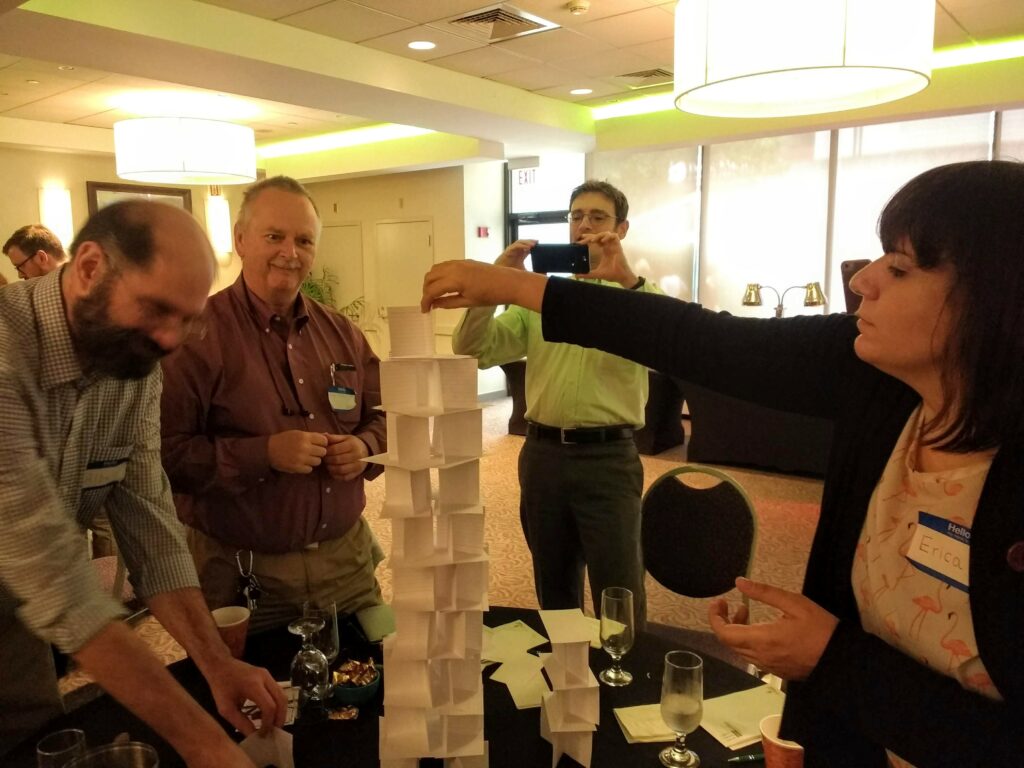
Sharing highlights and notable moments is another great way to open. This not only connects us, but also gives us a window into each other’s classrooms.
Finally, build a template
Efficiency is where it’s at. Reusing a solid meeting template can cut down on agenda-building time. Your agenda template will reflect your personality and meeting style, but here are a few templates that I’ve found helpful. Next time we meet I’ll just recycle this format and build the next meeting. Thank you, copy & paste.


